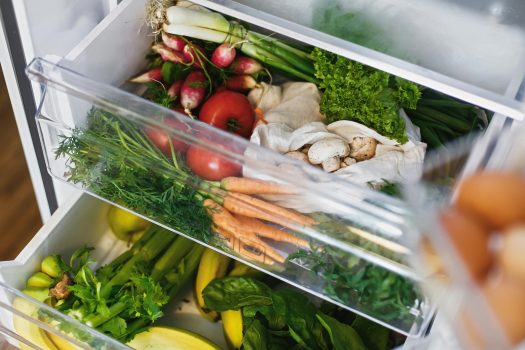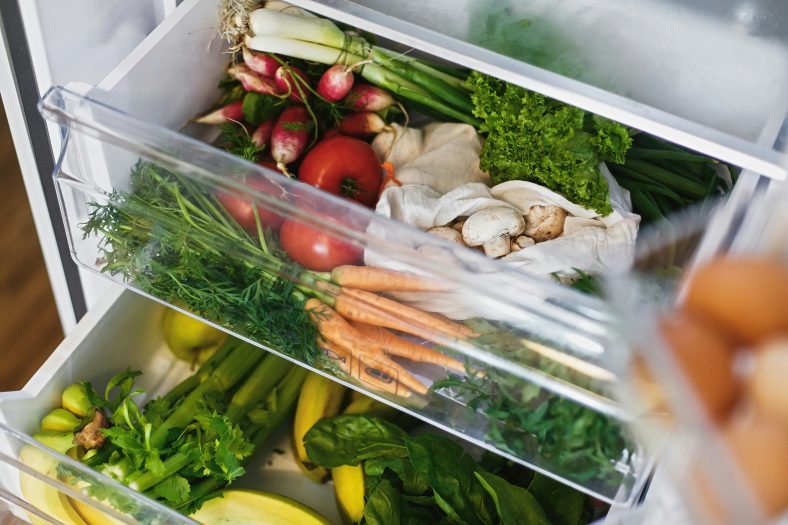
If you only have a minute…
- Various designs include French door, side-by-side, top freezer, bottom freezer, and mini fridges, each catering to different storage needs and kitchen layouts.
- Choose based on household size and usage habits, ensuring the refrigerator fits your space and provides sufficient storage without wasting energy.
- Key features to consider include energy efficiency (Energy Star rating), adjustable shelving, and door-in-door storage for convenience and efficiency.
- Popular finishes such as stainless steel, black stainless steel, white, and custom colours impact both aesthetics and maintenance.
- Smart refrigerators, convertible compartments, and built-in coffee makers offer advanced functionality. Setting a budget involves balancing initial cost with long-term energy efficiency and maintenance considerations.
Overview
Choosing the right refrigerator is a significant decision for any household. This essential appliance, vital for food preservation, impacts a home’s energy efficiency, style, and the user’s daily convenience. With numerous options available, including top brands like Samsung, LG, and Whirlpool, alongside a variety of types such as fridge freezers, small refrigerators, and high-efficiency models from GE and Bosch, selecting the best refrigerator to suit one’s needs can be daunting. Understanding the basics—ranging from types and sizes to essential features—is the first step towards making an informed purchase that balances functionality with style, energy efficiency, and budget.
“Choosing the right refrigerator is a significant decision for any household. This essential appliance, vital for food preservation, impacts a home’s energy efficiency, style, and the user’s daily convenience.”
This article will guide readers through the process of selecting the ideal refrigerator. It will cover the different types of refrigerators, like the versatile fridge freezer options and the compact choices for smaller spaces. We will delve into how to determine the right size and capacity for your needs, essential features that enhance usability and efficiency, and the design and finishes that can complement your kitchen’s aesthetics. Additionally, the guide will highlight the latest innovations in refrigerator technology, advice on setting a budget that includes considerations for the best refrigerator brands such as Samsung, LG, Whirlpool, and Bosch, and tips for maintenance to ensure longevity and optimal performance. Whether you’re outfitting a new kitchen or upgrading an old appliance, this guide aims to simplify your decision-making process, leading you to the refrigerator that best fits your lifestyle and needs.
Endless options
Types of Refrigerators

Source: Unsplash
Refrigerators come in various designs and configurations, each suited to different needs and kitchen layouts. Understanding the types available can help you make an informed decision that aligns with your lifestyle and storage requirements.
French Door Refrigerators
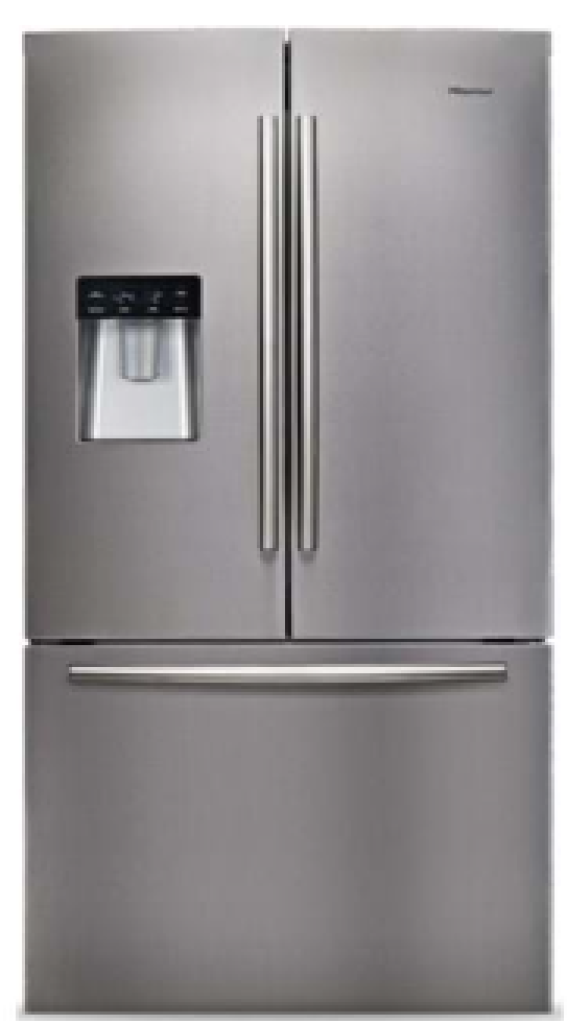
French door fridge. Source: Hisense.
French door refrigerators are known for their stylish design and efficient use of space. These models feature two doors that open from the center to reveal a wide refrigerator section, with a freezer compartment located below, often in the form of a pull-out drawer. Brands like LG, Haier, and Fisher & Paykel offer models with features such as water dispensers, ice makers, and customisable compartments. These refrigerators are ideal for large families or those who prefer an upscale look in their kitchen.
Side-by-Side Refrigerators
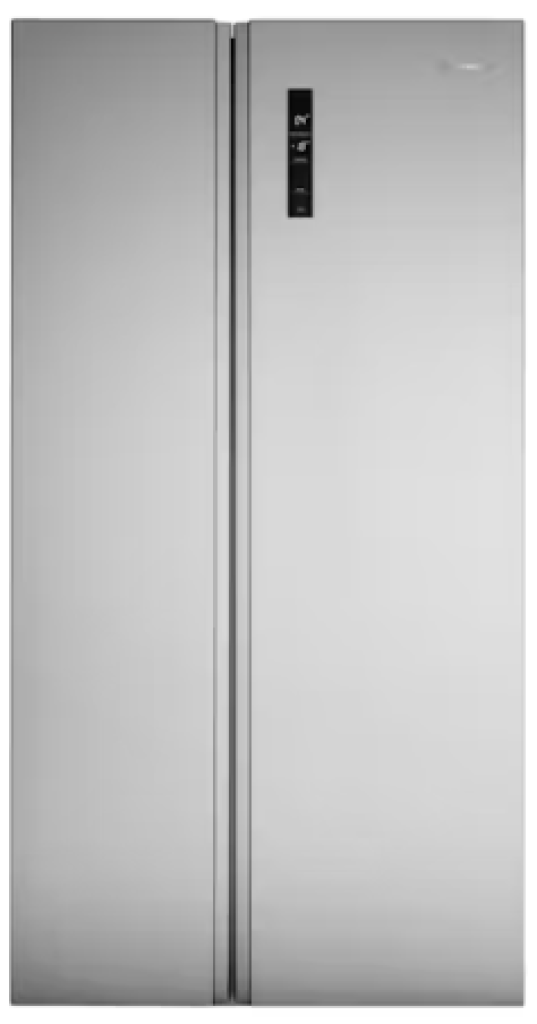
Side-by-side fridge. Source: Westinghouse.
Side-by-side refrigerators offer a vertical layout with two doors opening from the center, one side dedicated to the fridge and the other to the freezer. This design is particularly beneficial for kitchens with limited space as it requires less clearance to open the doors. Brands like Hisense and GE provide models with various features including water and ice dispensers, LED lighting, and adjustable shelves, making them a popular choice for modern Australian homes.
Top Freezer Refrigerators
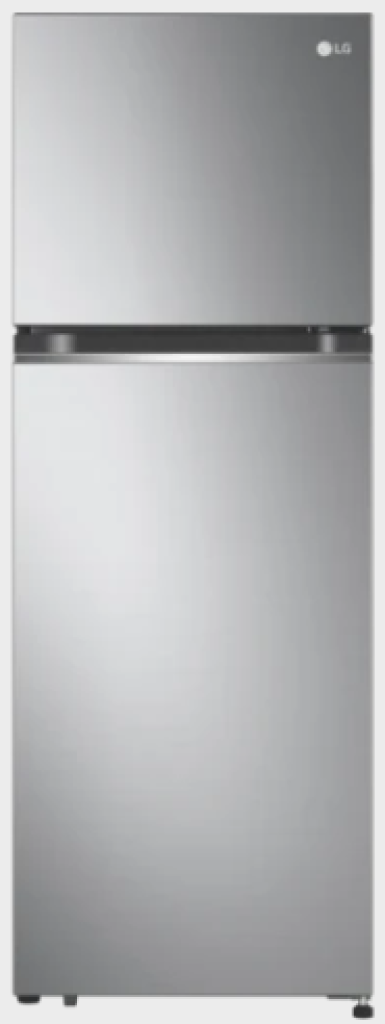
Top freezer fridge. Source: LG.
Top freezer refrigerators are the traditional model where the freezer compartment is located above the refrigerator section. This type is known for its affordability and energy efficiency. LG offers a range of top freezer models that are compact, making them suitable for medium-sized families or smaller households. These refrigerators are a practical choice for those who prioritise cost-effectiveness and simplicity.
Bottom Freezer Refrigerators
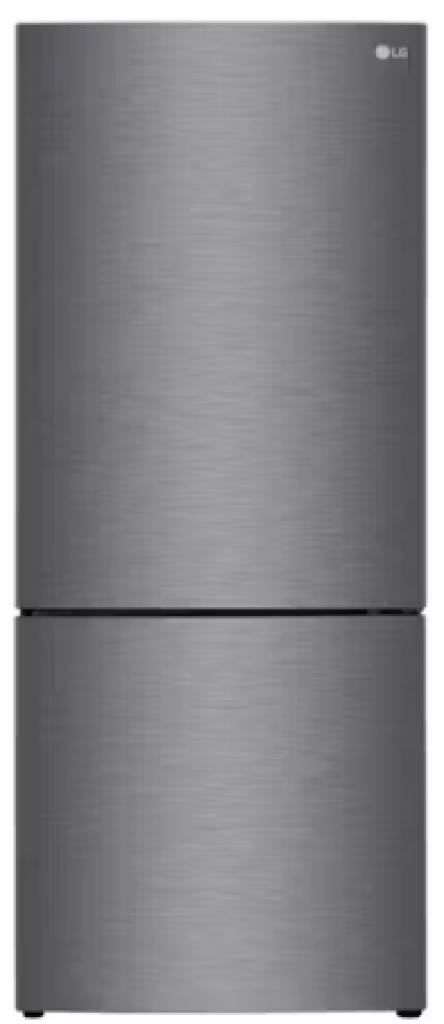
Bottom freezer fridge. Source: LG.
In bottom freezer refrigerators, the freezer compartment is situated below the refrigerator section, making it easier to access refrigerated items at eye level. Samsung and other brands offer models with features like slide-out freezer drawers and ample shelving. This type of refrigerator is favored for its convenience and modern design, though it may be priced higher than top freezer models.
Mini Fridges
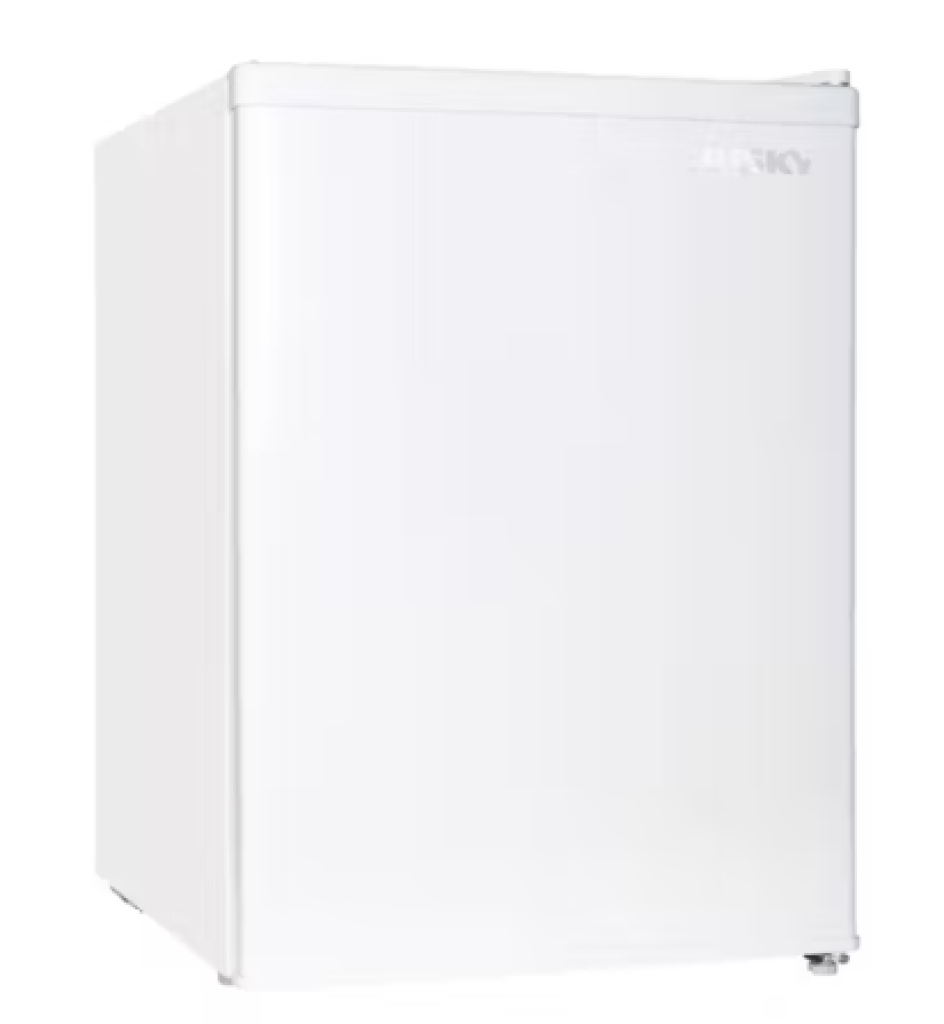
Mini fridge. Source: Husky.
Mini fridges, also known as bar fridges, are compact units often used for additional beverage storage in home bars or outdoor areas. Brands like Hisense provide a variety of mini fridges that are easy to relocate and economical to purchase, though they tend to be less energy-efficient compared to larger models.
Each type of refrigerator offers unique advantages and may come equipped with special features that cater to different preferences and needs. When choosing a refrigerator, consider factors such as the size of your household, the layout of your kitchen, and specific features that might enhance your daily use.
Tailored for your needs
Determining the Right Size and Capacity

Source: Unsplash
Choosing the correct refrigerator capacity is crucial to accommodate your household’s needs without wasting energy or space. The size of your family and your usage habits should guide your decision, ensuring you select a refrigerator that fits seamlessly into your daily life.
“Choosing the correct refrigerator capacity is crucial to accommodate your household’s needs without wasting energy or space.”
Small Households
For individuals or couples (1-2 people), a refrigerator with a capacity between 250 to 380 liters is typically sufficient. These models are ideal for storing daily essentials and a moderate amount of groceries. Brands like Hisense and LG offer models in this range that are energy-efficient despite their smaller size, which is a crucial factor since smaller fridges can sometimes be less energy-efficient. Prices for these models range from approximately $429 to $2399, making them accessible for most budgets.
Medium Households
Families of three to four people should consider refrigerators with a capacity ranging from 350 to 530 liters. This size is perfect for accommodating larger grocery loads, frequent meal preparations, or even occasional entertaining. Brands such as Samsung and GE have a variety of options in this category, featuring advanced technologies like adjustable layouts and retractable shelving, which help maximise storage space. These refrigerators are priced between $699 and $4799, offering a balance between size and cost-effectiveness.
Large Households
For larger families of five or more, a refrigerator with 440 liters or more is advisable. Each additional family member typically requires an extra 28.5 liters of space, plus additional freezer capacity. In this range, Samsung and Bosch provide options that include French-door models and pigeon pairs – a separate but matching upright fridge and freezer – which offer extensive storage and flexibility. These are particularly suitable for storing large platters and bulk foods, with prices ranging from $1079 to $5500 and above. Large households should avoid models with ice dispensers as they can consume up to 30% of the freezer space, which is better utilised for food storage.
In determining the right size and capacity, also consider the physical space you have available. Side-by-side fridges, for example, are excellent for narrower spaces but might not accommodate larger items as easily. If space and budget are constrained, models with innovative storage solutions can make a smaller refrigerator more functional.
By matching your household size with the appropriate refrigerator capacity and considering the specific features offered by brands like LG, Samsung, and Bosch, you can ensure efficient use of both space and energy, while also fitting your kitchen’s aesthetic and functional needs.
Essential extras
Essential Features to Consider

Source: Unsplash.
When selecting a refrigerator, considering the essential features that match your lifestyle and usage needs is crucial. Here are some key features to keep in mind:
Energy Star Rating
The Energy Star Rating is a standardised measure of energy efficiency across various appliances, including refrigerators. Models with a higher star rating are more energy-efficient and can significantly reduce electricity costs. For instance, a refrigerator with a 6-star rating is far more efficient than one with just 2 stars. The Energy Rating Label not only displays the star rating but also shows the estimated annual energy consumption in kilowatt-hours (kWh), helping consumers understand the potential energy usage and cost. It’s advisable to choose a refrigerator that balances size with energy efficiency, especially considering that your refrigerator can account for up to 8% of your energy bill.
Adjustable Shelving
Adjustable shelving in refrigerators offers the flexibility to store various items conveniently. Tempered glass shelves are durable enough to hold heavy items and are easy to clean. The ability to adjust the height of the shelves and door pockets allows for the accommodation of large pots or tall bottles, enhancing the usability of your refrigerator space. Brands like Samsung, LG, and Bosch offer refrigerators with these adjustable features, making them versatile for different storage needs.
Door-in-Door Storage
The innovative door-in-door feature provides quick access to frequently used items without opening the full fridge door, which helps maintain the internal temperature and reduce cold air loss. This feature is particularly useful in busy households where the fridge is accessed frequently, as it improves energy efficiency by minimising the amount of cold air that escapes. Additionally, it offers extra storage for small items and beverages, making it a practical feature for those who value convenience and energy savings.
By prioritising these features, consumers can select a refrigerator that not only meets their specific food storage needs but also contributes to energy savings and efficiency. Brands like GE, Whirlpool, and Hisense provide various models that incorporate these essential features, catering to different preferences and requirements.
Stylish and practical
Design and Finishes
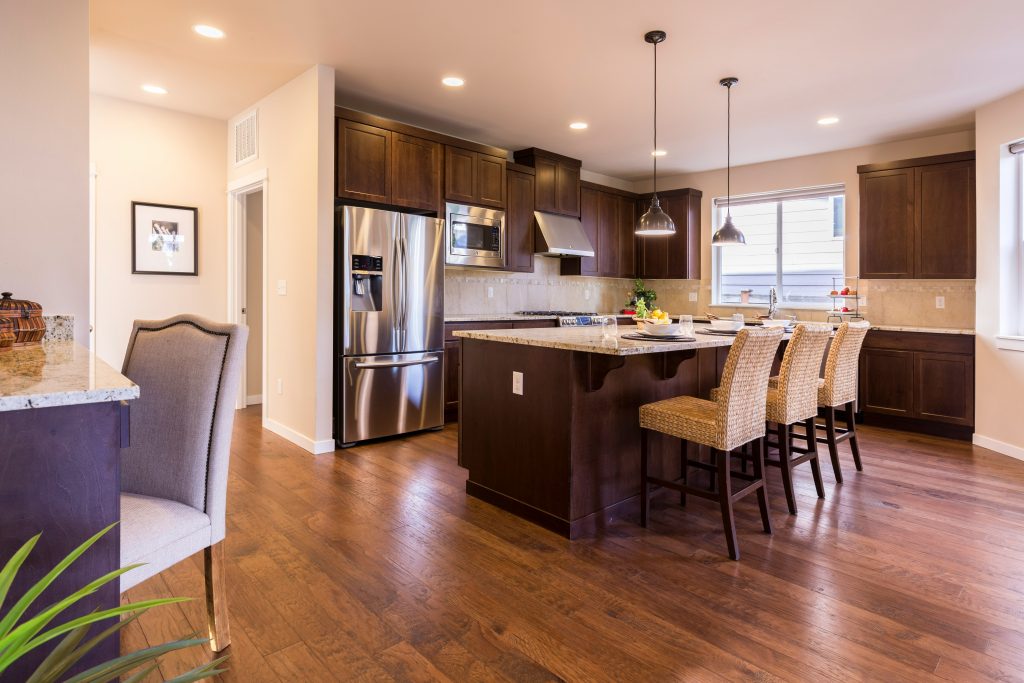
Source: Unsplash
When selecting the design and finishes of a refrigerator, one must consider both aesthetic appeal and practicality. Different finishes not only alter the appearance of the appliance but also impact its maintenance and longevity. Here, we explore popular finishes such as stainless steel, black stainless steel, and white, along with custom colour options, highlighting their pros and cons to help you make an informed decision.
Stainless Steel
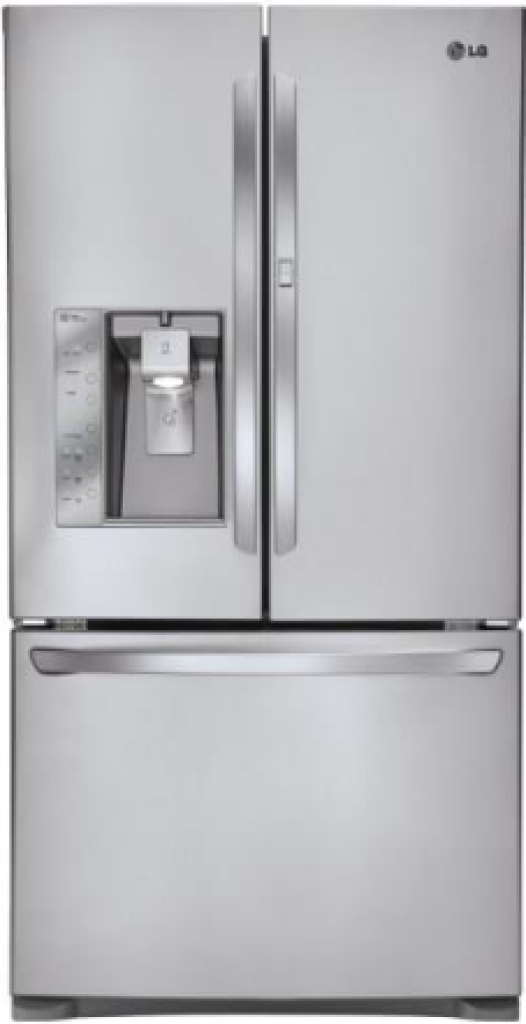
Stainless steel fridge. Source: LG.
Stainless steel remains a top choice for kitchen appliances due to its sleek, modern appearance that complements a variety of kitchen colour schemes. Brands like Samsung and Bosch offer a range of refrigerators in this finish, ensuring durability and resistance against rust, corrosion, and bacteria. However, the main drawback is its tendency to show smudges and fingerprints, although some models feature a smudge-resistant finish. Despite being generally more expensive, the resilience and aesthetic appeal of stainless steel make it a worthwhile investment for many.
Black Stainless Steel

Black stainless steel fridge. Source: Westinghouse.
An increasingly popular variant, black stainless steel provides a sophisticated twist on the traditional stainless steel finish. Brands such as LG and KitchenAid offer refrigerators in this sleek finish which is praised for its resistance to smudging and fingerprints. However, it is important to note that black stainless steel can scratch more easily than its classic counterpart, and the shade of black may vary between brands. This finish suits those looking for a bold, modern look that stands out in the kitchen while maintaining the benefits of stainless steel.
White and Custom Colours

White fridge. Source: Hisense.
For those preferring a lighter or more traditional look, white finishes are a timeless option. Brands like Hisense and GE offer white refrigerators that are generally more affordable and resistant to smudging. While they may show dirt or stains more easily, regular cleaning can maintain their pristine appearance. On the other hand, refrigerators in bright, bold colours such as red, green, or blue are offered by various manufacturers, adding a unique and vibrant touch to the kitchen. These coloured finishes are excellent for hiding fingerprints and dirt, though they might be challenging to match if you purchase appliances from different brands.
Incorporating these finishes into Australian homes allows for a range of aesthetic choices that can complement any kitchen design. Whether you opt for the clean simplicity of stainless steel, the dramatic flair of black stainless steel, or the classic charm of white and custom colours, each finish offers distinct advantages. By considering these options, one can choose a refrigerator that not only meets functional needs but also enhances the overall look of the kitchen.
Cutting-edge features
Additional Features and Innovations
Smart Refrigerators
Smart refrigerators represent a significant leap in appliance technology, integrating internet connectivity with traditional refrigeration functions. These advanced refrigerators not only preserve food but also enhance kitchen efficiency and connectivity. For instance, the Samsung Family Hub fridge allows users to view inside their refrigerator remotely via built-in cameras, preventing unnecessary purchases and reducing food waste. These refrigerators can also track expiration dates and send timely reminders to utilise products, further minimising waste.
“Smart refrigerators represent a significant leap in appliance technology, integrating internet connectivity with traditional refrigeration functions.”
Moreover, smart refrigerators can learn from user habits to provide personalised services such as bespoke shopping recommendations and recipe suggestions based on available ingredients. This feature is particularly beneficial for busy households, enabling efficient meal planning and shopping. Additionally, the integration with other smart home devices, such as smart ovens, allows for a seamless cooking experience, where the oven can preheat to the correct temperature as per the recipe selected on the refrigerator’s display.
Convertible Compartments
Convertible refrigerator-freezers offer unmatched flexibility in managing storage needs. These units can function either entirely as a refrigerator or a freezer or be partitioned to serve both purposes simultaneously. This adaptability is ideal for those who require additional refrigeration space without the need to invest in a separate appliance. Brands like Hisense and Samsung offer models that can be adjusted based on seasonal needs or special occasions, ensuring that space and energy are utilised most efficiently.
Built-in Coffee Makers
For coffee enthusiasts, built-in coffee machines are a luxurious addition to modern kitchens, merging functionality with style. These machines differ significantly from their countertop counterparts by being integrated into kitchen cabinetry, offering a sleek and unobtrusive look. Brands like Bosch and Siemens provide models with advanced features such as durable ceramic grinders and customisable brewing options, allowing users to fine-tune the strength, temperature, and volume of their coffee.
These integrated machines are not only about brewing the perfect cup; they also include features for easy maintenance. Many models come with automated cleaning cycles, removable brewing units, and dishwasher-safe components, simplifying the upkeep and ensuring the longevity and performance of the machine.
By incorporating these innovative features, refrigerators not only serve their fundamental purpose of food preservation but also enhance the functionality and aesthetics of modern kitchens. Brands like Samsung, Bosch, and Siemens continue to lead the way in offering appliances that cater to the sophisticated needs and preferences of today’s consumers.
Smart spending
Setting a Budget

Source: Unsplash
Navigating your refrigerator purchase within a budget doesn’t mean compromising on quality. Here are options across different price ranges that ensure you find the best refrigerator for your needs without breaking the bank.
Low-End Options
For those looking for budget-friendly choices, small fridges might be the way to go. They are light on your wallet both at the point of purchase and in terms of lifetime running costs. Despite being limited on features and space, brands like Hisense offer models that include useful features such as chillers. Prices for family-sized, top-mount fridges start from around $900. It’s important to measure your space carefully and consider the usability of the fridge’s layout to ensure it fits your needs. Remember, while smaller fridges are economical, they may not perform as well as larger models. Brands like Westinghouse and Kelvinator provide affordable options that are worth considering.
Mid-Range Options
For medium-sized households, refrigerators with a capacity ranging from 350 to 530 liters are ideal. These models offer a balance between size and cost-effectiveness, with prices ranging from $699 to $4799. Brands like Samsung and GE offer refrigerators with features like adjustable layouts and retractable shelving, which help maximise storage space. Additionally, investing in a used, high-quality refrigerator like Fisher & Paykel can provide access to better features and larger sizes at a fraction of the cost of new models. This approach requires more effort in terms of pickup and installation but offers considerable savings.
High-End Options
If you’re after luxury and high-spec features, French door and smart fridges are where it’s at. Prices for these sophisticated models can range from $3,000 to $9,000. Brands like Samsung offer French door fridges with features like Power Cool and Power Freeze functions, digital inverter technology, and a fingerprint-resistant finish. The extra-large French door models assessed by experts deliver similarly good performance despite significant price differences. For those who desire innovative technology, smart fridges with internet connectivity and internal features like a knock-twice door are available, enhancing both functionality and kitchen aesthetics.
When setting your budget, consider not only the initial purchase price but also the long-term running costs. Energy efficiency is crucial as a less efficient fridge can lead to higher electricity bills over time. Look for models with a good Energy Star rating to ensure you are making an economical and environmentally friendly choice. By carefully considering these options, you can select a refrigerator that fits both your budget and your lifestyle.
“When setting your budget, consider not only the initial purchase price but also the long-term running costs.”
Keep it fresh
Maintenance Tips

Source: Unsplash
Cleaning Tips
To extend the lifespan of your refrigerator and keep it functioning efficiently, regular cleaning is essential. Start by removing perishables and placing them in a cooler with ice. Check for expired items and discard them. For thorough cleaning, remove all shelves and drawers, and wash them with warm water and dishwashing detergent. Let glass components reach room temperature before washing to prevent shattering.
“To extend the lifespan of your refrigerator and keep it functioning efficiently, regular cleaning is essential.”
Use a solution of one part baking soda to six parts water to clean the interior surfaces of your fridge. Pay special attention to grooves and crevices where dirt accumulates. For tough spots, an old toothbrush or cotton bud can be effective. Additionally, inspect the door seal and clean it with warm soapy water, checking for any damage or wear and tear.
Vacuum the condenser coils located at the back or beneath your fridge to remove dust and debris, which helps in maintaining efficiency. For stainless steel surfaces, use a specific polish to keep them looking new and to repel fingerprints and smudges.
Temperature Management
Proper temperature settings are crucial for food safety and energy efficiency. The ideal temperature for the refrigerator is between 35 and 38 degrees Fahrenheit, with the optimal setting at 37 degrees Fahrenheit. Ensure the freezer is set at 0 degrees Fahrenheit to keep food frozen solid. Use appliance thermometers to monitor these temperatures, especially in older models where temperature distribution might be uneven. Adjusting the temperature seasonally can also help in maintaining optimal freshness and reducing energy costs.
Defrosting Guides
Defrosting your refrigerator and freezer regularly prevents ice build-up, which can impede airflow and overwork the appliance. To defrost, first remove all food items and store them in a cooler. Turn off the unit to avoid wasting energy. Place a bowl of hot water inside the freezer to speed up the melting process, replacing the water as it cools.
Use towels or newspapers to soak up the water and prevent messes. Once the ice has melted, clean the interior with soap and water, ensuring it’s dry before turning the appliance back on. If large chunks of ice are present, gently remove them with a plastic spatula to avoid damaging the interior. After defrosting, allow the fridge to reach its optimal temperature before restocking it with food.
By following these maintenance tips, you can ensure your refrigerator operates efficiently, maintains food safety, and extends its service life. Brands like Samsung, LG, and Hisense offer models with features that simplify maintenance, such as easy-clean finishes and smart temperature management, making them ideal choices for hassle-free upkeep.
Final thoughts
Conclusion
Throughout this guide, we’ve explored various considerations essential for selecting the ideal refrigerator that meets both your aesthetic preferences and practical needs. From understanding the different types available, such as French door, side-by-side, top freezer, bottom freezer, and mini fridges, to assessing the ideal size and capacity for your household, this guide has aimed to streamline the decision-making process. Notable brands like Samsung, LG, and Hisense have been highlighted for their innovative features, including energy efficiency, adjustable shelving, and smart technology integrations, all of which cater to modern Australian homes. Moreover, the importance of setting a budget and implementing maintenance tips to ensure longevity and optimal performance of your appliance has been underscored.
Selecting the right refrigerator is more than just an investment in a kitchen appliance; it’s a commitment to enhancing your daily lifestyle and operational efficiency. As you weigh your options, consider how brands like Bosch, Whirlpool, and GE offer a diverse range of models that can seamlessly integrate into your kitchen while providing the functionality and features that matter most to you. Whether you’re outfitting a new home or upgrading your current setup, prioritising energy efficiency, adaptability, and design will serve you well in the long term. With these considerations in mind, you’re well-equipped to make an informed choice that aligns with your household’s needs, preferences, and budget, ensuring your day-to-day convenience and overall satisfaction.
FAQ

